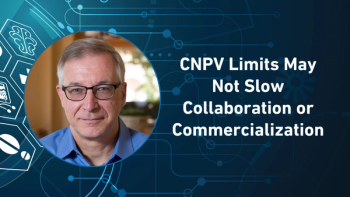
Seeing the Value of Scientific Content
Leveraging the value healthcare professionals place on scientific content
Nearly every article published on digital transformation in pharma over the past two years has identified COVID-19 as the catalyst. Whilst this is undoubtedly true, why has it taken a global pandemic to realize the opportunities that a digital approach offers?
Let’s take scientific content as the prime example. Traditionally, pharma has shared content with healthcare professionals (HCPs) in the form of physical reprints. Mass quantities of journal articles were ordered, stored, and distributed worldwide, according to demand. Although this approach has worked for many years, it isn’t cost efficient and often resulted in large volumes of waste being generated. Alternative digital solutions to this challenge, such as ePrints (digital versions of journal articles), were already in existence, but why try and fix something that isn’t broken? Then comes COVID and suddenly face-to-face contact disappears and is replaced with a digital-only world.
Reinventing the norm
Pharma found itself having to quickly prioritize its investments into digital solutions. Almost overnight it reinvented its approach to HCP engagement, but in the rush some fundamental strategic considerations were left behind. Recent data from a report jointly authored by Graphite Digital and Reuters Events suggests that only 4% of digital product launches regularly succeed. This is a stark reminder of the challenges pharma still faces. It’s not that they don’t want a digital approach. There is high acceptance of the benefits of digital products. In fact, 91% agreed that digital solutions can add value to the HCP. However, organizational changes are required to truly enable a data driven digital approach and this is what is starting to happen.
Learning from experience
Now is an ideal opportunity for pharma to build on the experience of the last two years. Attitudes to the digital-first approach have changed both in pharma and with HCPs. An Across Health study in 2021 highlighted that ePrints delivered by Pharma to HCPs were considered high value by them (in the EU4, UK and US) but the current reach was limited. In short, despite the available access to scientific content, getting this “served up” to HCPs by pharma is a challenge. Scientific content will drive customer acquisition, helping pharma communicate with their customers more effectively. We know HCPs want research that is relevant to them, and with pharma’s understanding of the HCPs interests and preferences, they can deliver the scientific content in a convenient and tailored way, making ongoing engagement with them much more likely.
A global approach to managing content
Alongside greater engagement with HCPs, scientific content offers a rapid return on investment. Compared to reprints, the cost savings are obvious: no more print costs, rush orders, warehousing and distribution to field and events. And, of course, there is the carbon footprint reduction. In addition, through global and cross channel aggregation of demand, the per unit cost of the ePrint can be reduced significantly, driving overall costs down, but importantly also bringing the unit cost down to—in most cases—a level where reporting on transfer of value is not required as the unit cost drops below the value of transfer threshold.
Building a customer success platform
Specialist platforms for copyright content distribution address the associated challenges, such as copyright protection, adherence to publisher’s terms and conditions (in most cases distribution of ePrints by pharma is regarded as a “commercial use case,” which requires a contractual arrangement to be in place), compliance with local regulations and the HCP experience. With this in place, pharma can leverage copyright scientific content by using ePrints and associated content across all channels.
Brand teams can assess the opportunities for ePrint inclusion when defining the brand plans and customer engagement strategies, ensuring ePrints are used most effectively, supporting the overall communication approach. In doing so, they can consider the right balance between providing scientific content—either directly brand related or therapeutic area focused—and brand messaging, maintaining a relationship that provides value for both the HCP and the pharma company. And the additional insights from HCP engagement with ePrints can drive further adjustment and optimization of the approach.
There’s no time like the present. We know demand has increased and that there are solutions to support this. Pharma just needs to grasp the opportunity now.
Jan van den Burg is CEO,
Newsletter
Stay ahead in the life sciences industry with Pharmaceutical Commerce, the latest news, trends, and strategies in drug distribution, commercialization, and market access.





